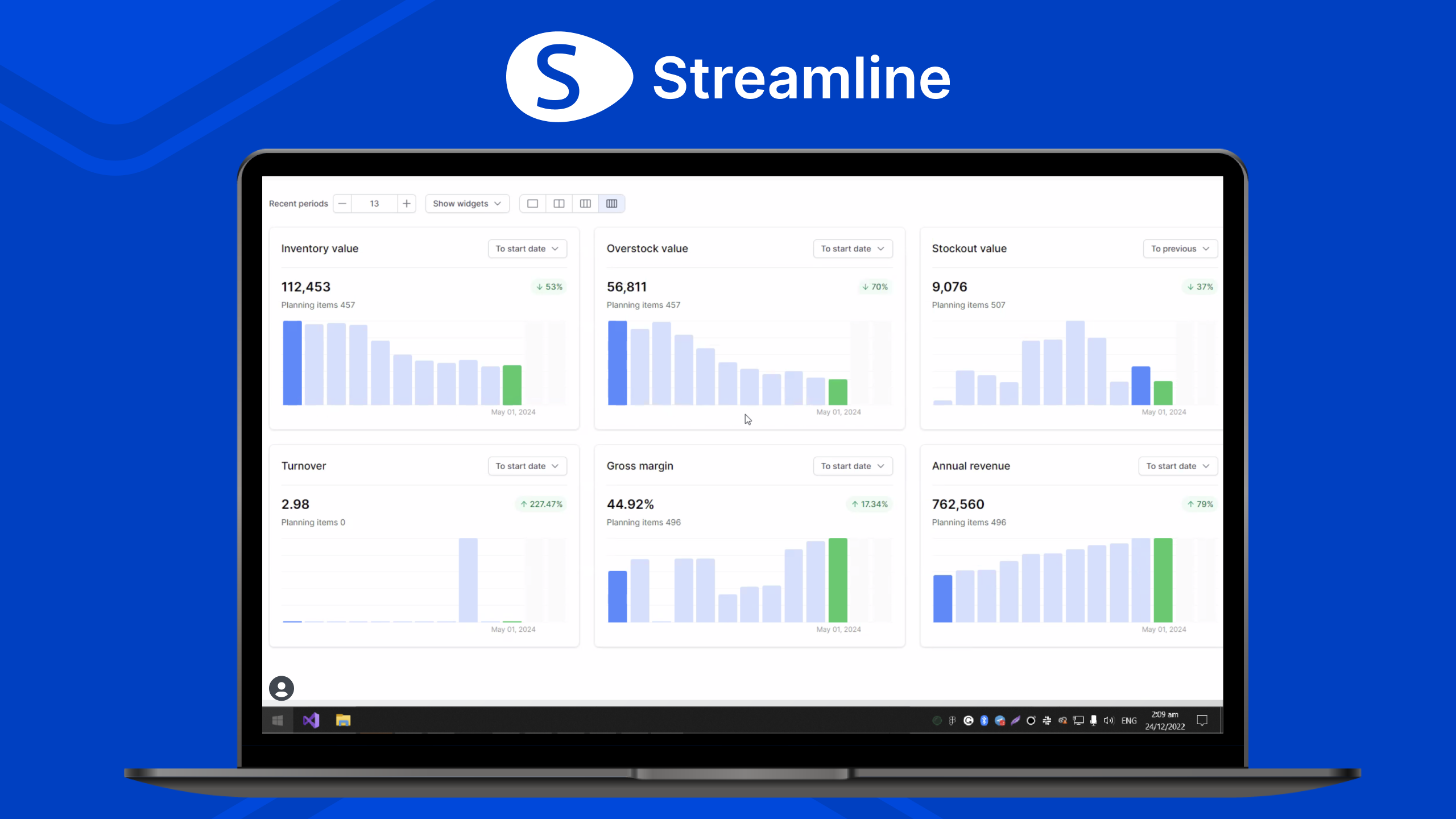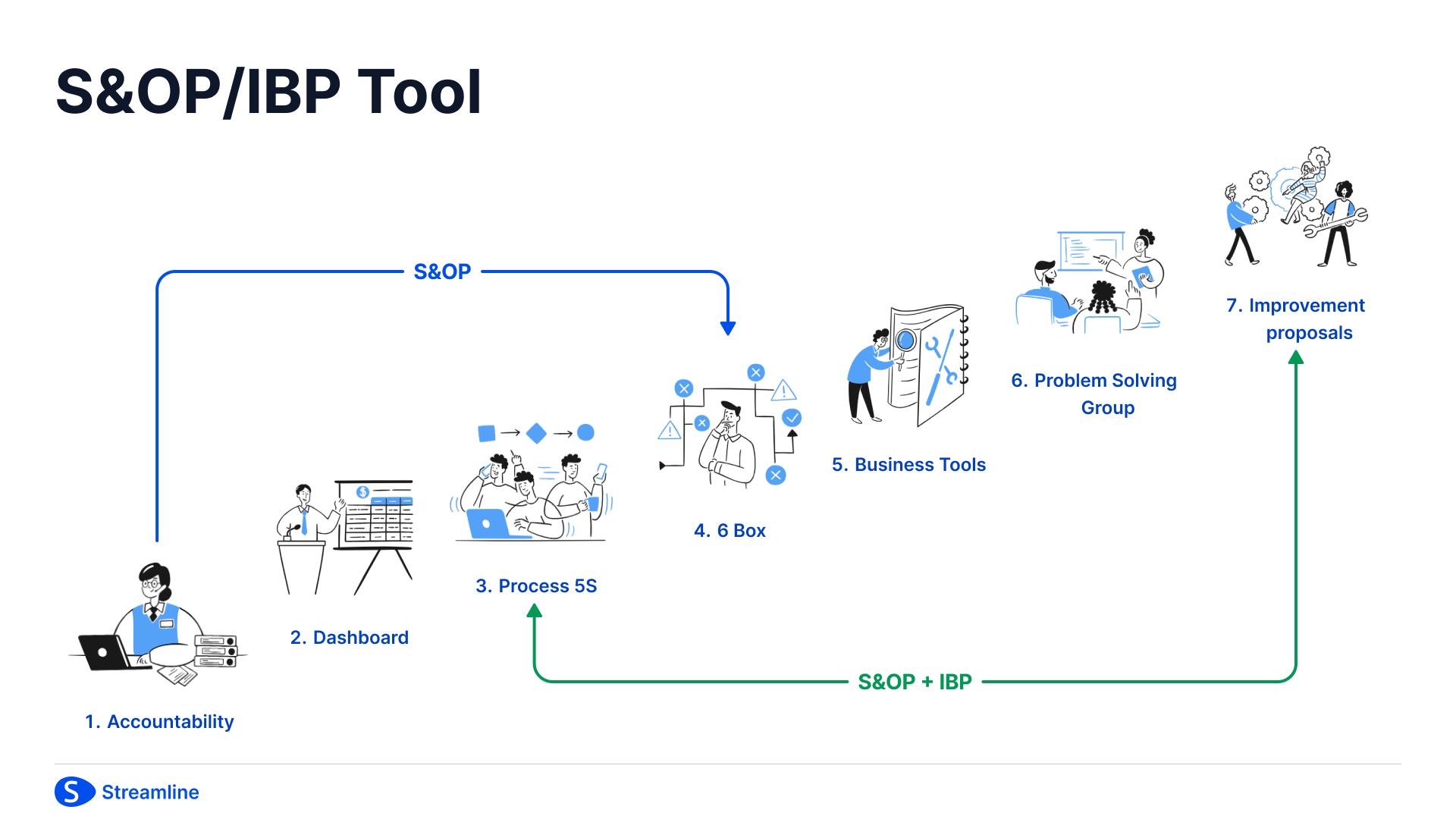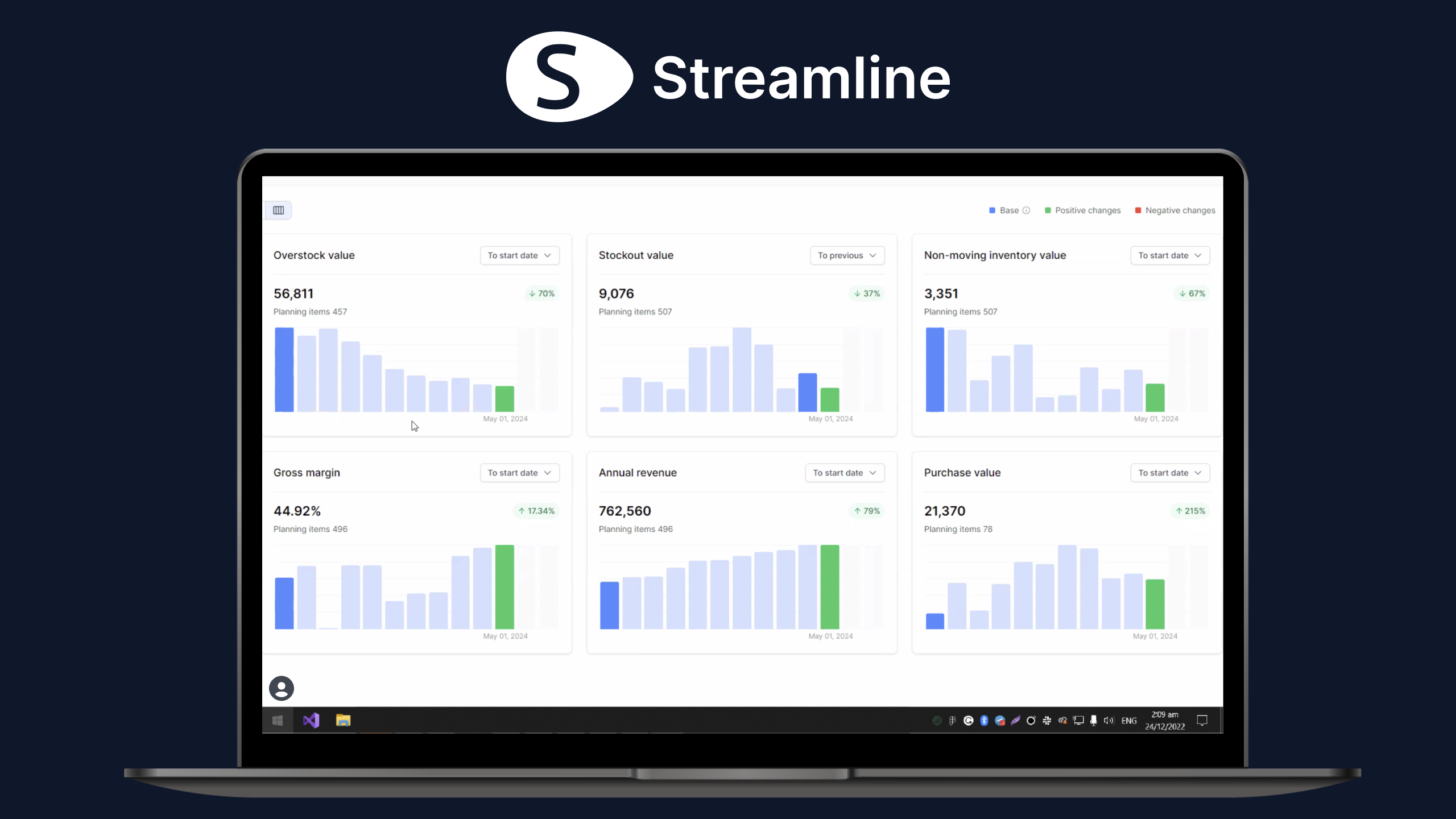The Ultimate Guide to Mastering Sales and Operations Planning


Looking for S&OP software to streamline your business operations? Our guide offers a straightforward look at how these tools help match your sales planning with production capabilities to boost operational efficiency. Learn to navigate the options and select the software that best suits your needs, without the jargon.
Key Takeaways
Sales and Operations Planning (S&OP) is a critical process that evolved from supply chain management to synchronize an organization’s operations by integrating departmental functions, aligning supply and demand, and utilizing specialized planning software.
The benefits of S&OP solutions like automation, advanced analytics, and scenario planning, that are pivotal for streamlined inventory management, demand forecasting, and enhanced collaboration.
The successful implementation of S&OP software depends on factors like compatibility with existing systems, scalability, user-friendliness, and the best practices of securing executive ownership, fostering cross-functional collaboration, and a commitment to continuous improvement and adaptation.
History of Sales and Operations Planning
S&OP’s roots can be traced back to supply chain management. The process was adopted to improve production planning, bringing about a paradigm shift in how businesses operated. Over time, organizations realized the importance of integrating departments to ensure smooth functioning. This led to the adoption of the S&OP process, which became a linchpin in harmonizing operations across different departments.
The operations planning process revolutionized business operations by aligning supply and demand plans. This alignment was achieved through the integration of demand and supply planning, which merged sales forecasts with production plans for a more efficient planning process.
The Purpose of S&OP
S&OP primarily aims to unite organizations around a single plan. This balance between demand and supply not only improves service levels but also reduces costs, courtesy of the operations planning S&OP process which facilitates the creation of a cohesive operations plan.
The S&OP Process

The S&OP process includes the following steps:
Data gathering from sales and marketing teams for demand
Reviewing demand data in conjunction with supply data from operations
Identifying gaps between demand and supply
This process is crucial for maintaining operational efficiency and to improve customer service.
Once the gaps are identified, the next step is to develop an integrated plan to close these gaps. This is where S&OP software steps in. The software allows for:
Continuous monitoring and adjustment of the plan based on real-time data
-
Agile and responsive supply chain
-
Automation of the S&OP process
More efficient process
Minimization of the risk of errors
Better business outcomes
Key Roles in S&OP
There are several key roles in S&OP that contribute to its successful implementation. These include:
Executive leadership
Demand planning
Supply planning
Procurement team
Finance team
Marketing team
Sales&Operations
These roles work in synergy to provide direction and support, gather data from sales and operations, and facilitate the overall S&OP process.
The Role of S&OP in Business Success
S&OP serves as a pivotal factor in achieving business success. It harmonizes demand, supply, and financial planning, facilitating informed decision-making and yielding superior business outcomes. It helps keep every aspect of the company on the same page, allowing for smoother functioning and a more cohesive organization.
A sales and operations plan enhances the overall customer experience by streamlining processes and ensuring all departments are aligned. The use of Sales and Operations Execution (S&OE) workflows complements S&OP processes by providing real-time planning adjustments and feedback, aligning longer-term plans with actual supply chain performance. This coordination across business units increases transparency and helps balance supply and demand, leading to profitability.
Challenges Faced in Traditional S&OP Processes

Despite its numerous advantages, the S&OP process can face some challenges. Traditional S&OP processes often rely on spreadsheets, which, while common, can be time-consuming and error-prone, making them unsuitable for scaling with business growth. Complex S&OP processes can also lead to confusion and poor stakeholder compliance, particularly for new employees who may lack understanding if ongoing education is not provided.
Another challenge is ‘analysis paralysis’, where excessive analysis leads to a lack of timely decision-making, ultimately wasting resources and reducing process value. Disagreements during the development of tactical plans are common challenges in the S&OP process, and change orders in S&OP are costly and time-intensive, placing a heavy, formal burden between users and the flexibility they need.
A Closer Look at Leading S&OP Software Solutions

Streamline: AI-Powered S&OP Solution for Midsize and Enterprise Businesses
Tailor-made for midsize and enterprise businesses, Streamline provides a robust S&OP solution that can be deployed via cloud or on-premise. The platform offers the following features:
AI-powered time series demand forecasting for highly accurate predictions
Ability to adjust to the latest market trends
Suitable for midsize and enterprise businesses
It enhances inventory planning by identifying risks such as overstock and out-of-stock situations, maintaining optimal inventory levels. With a clean and fast user interface, businesses can experience a smooth implementation process, contributing to Streamline’s excellent reputation in the market.
Key Factors to Consider When Choosing S&OP Software
Several key factors are essential when selecting S&OP software. These include:
The software’s ability to integrate with existing systems
Its scalability and customization to cater to unique business needs
Its ease of use and implementation
Integration with Existing Systems
Data integration capabilities are crucial for S&OP software, enabling centralization of master data from source systems like ERP and CRM for holistic planning. Compatibility with existing systems, including ERPs or other operational tools, is a critical consideration when selecting an S&OP software solution.
Seamless integration of S&OP software facilitates communication and information sharing across departments, which is essential for successful implementation. S&OP software equipped with embedded analytics allows users to monitor and adjust their plans based on data-driven insights for better decision-making.
Scalability and Customization
S&OP software must be adaptable to accommodate changes in business size and structure, ensuring longevity and relevance as the company evolves. Custom workflows and role-based views in S&OP software allow for a personalized approach to demand planning, increasing the tool’s efficiency for different user needs.
S&OP software that features automated production planning based on real-time data can help businesses respond quickly to market changes and scale operations accordingly.
Ease of Use and Implementation
Proper user training and ongoing support are critically important to not only smoothly implement S&OP software but to make sure it is effectively utilized by the team. The successful deployment of S&OP software is assured by a comprehensive process that includes:
Needs analysis
Installation
Integration with existing systems
Thorough testing
A straightforward and intuitive software interface greatly reduces the learning curve for users and encourages broader adoption within the organization.
Real-World Examples: Success Stories with S&OP Software
To grasp the effects of S&OP software, we will explore a few real-world examples. Unilever, for instance, implemented an S&OP process that led to a 20% reduction in waste across its supply chain and a 6% increase in return on invested capital.
How Streamline enhanced supply chain visibility for one of the most important pet segment retailers in the LATAM region
Streamline has had a significant impact on inventory management and sales forecast. Its integration with external data sources has enhanced the accuracy of demand forecasting, leading to more reliable supply plans and better business decisions.
As a direct result of more accurate forecasting, companies using Streamline experienced optimized inventory levels, avoiding both overstock and stockouts.


Best Practices for Implementing and Optimizing S&OP Software
Adhering to certain best practices is essential to maximize the benefits of your S&OP software. These include securing executive ownership and support, fostering cross-functional engagement, and investing in continuous improvement and adaptation.
Executive Ownership and Support
Executive ownership and backing are fundamental to the successful deployment of S&OP software. Executives must take ownership and effectively arbitrate conflicts between sales and operations. During the monthly S&OP cycle, active participation from executives is essential, which includes:
Attending meetings
Reviewing plans beforehand
Resolving issues around constrained shipment plans
Addressing changes that significant family plans might necessitate
Executives are also expected to stand behind the S&OP plan, especially when communicating with corporate stakeholders.
Cross-Functional Engagement
Another vital element for effectively implementing S&OP software is cross-functional engagement. Establishing common goals and shared metrics across departments fosters collaboration and aligns efforts. Defining roles and responsibilities for each team member within the S&OP process promotes accountability and streamlines communication.
Encouraging open dialogue and feedback among different departments achieves consensus and fosters collaboration in the S&OP process. Celebrating and rewarding success within the S&OP team motivates members, promotes a positive culture, and reinforces the value of collaboration.
Continuous Improvement and Adaptation
The success of S&OP software implementation heavily relies on ongoing improvement and adaptation. Regular evaluation of S&OP ensures its effectiveness and allows for adjustments in response to market conditions and business needs. A clear infrastructure representing the various enterprise stakeholders in S&OP is crucial for maintaining high levels of engagement and driving ongoing process improvement.
Periodic internal audits of S&OP process operation can identify key strengths and highlight areas for improvement, but must be set up to focus on continuous improvement rather than just policing adherence.
Summary
In conclusion, S&OP is a powerful tool that can transform the way businesses operate. By aligning demand and supply, improving service levels, and reducing costs, it can significantly enhance performance. While the process may have its challenges, implementing S&OP software can help overcome these hurdles. Streamline is an industry-leading solution that offers unique features and benefits, enabling businesses to optimize their S&OP processes. By considering factors like integration with existing systems, scalability, customization, and ease of use, businesses can select the right S&OP software to fit their needs.
Frequently Asked Questions
What is the difference between S&OP and MRP?
The main difference between S&OP and MRP lies in their approach to managing shipment plans and supply plans. While S&OP focuses on matching inventory, MRP prioritizes planning the supply to meet requirements. Ultimately, the difference is that S&OP emphasizes inventory, whereas MRP emphasizes supply.
What company uses S&OP?
Carters, a leading retailer of young children’s apparel in the United States and Canada, uses S&OP to solve supply chain issues. This implementation allowed Carters to remove inventory from its supply chain, improving efficiency.
What is a S&OP system?
A S&OP system, or sales and operations planning system, is an integrated process aligning demand, supply, and financial planning to drive organizational consensus for balancing supply and demand in business operations.
How do you do sales and operations planning?
To do sales and operations planning, follow a six-step process: gather and forecast data, review demand, plan production, reconcile plans in a pre-S&OP meeting, finalize in an executive meeting, and implement the strategy. This process involves collecting data, reviewing demand, planning production, reconciling plans, finalizing in an executive meeting, and implementing the strategy.
What is the purpose of S&OP?
The purpose of S&OP is to align organizations around a single plan, balance demand and supply, and improve service levels while reducing costs. S&OP helps in achieving operational efficiency and meeting customer demands effectively.
Still relying on manual work in Excel for planning?
Automate demand and supply planning with Streamline today!
- Achieve optimal 95-99%+ inventory availability, ensuring you can meet customer demand consistently.
- Attain up to 99% forecast accuracy, getting more reliable planning and decision-making.
- Experience up to a 98% reduction in stockouts, minimizing missed sales opportunities and customer dissatisfaction.
- Cut excess inventory by up to 50%, freeing up valuable capital and storage space.
- Increase margins by 1-5 percentage points, boosting overall profitability.
- Enjoy up to 56 times ROI within one year, with a 100% ROI achievable in the first three months.
- Reduce the time spent on forecasting, planning, and ordering by up to 90%, allowing your team to focus on strategic activities.